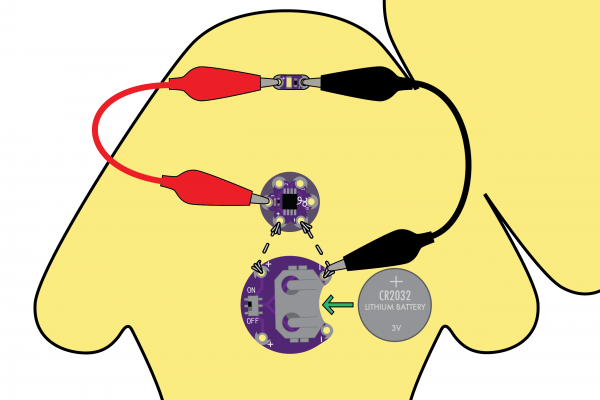Planning a Wearable Electronics Project
Prototyping
After gathering the materials and components planned during brainstorming, it is time to prototype the circuit. To avoid the frustration of sewing things together only to find out they don't work the way you planned, we recommend using alligator clips to temporarily connect LilyPad components and then testing the circuit and/or code.
If using a product that comes in Protosnap form, such as the ProtoSnap LilyTwinkle, ProtoSnap LilyPad Development Board Simple, or ProtoSnap LilyPad Development Board, you can skip the alligator clips since the boards have traces connecting them. If adding additional sensors or pieces to a Protosnap board, use alligator clips.
If you are using a microcontroller, now is the time to start writing some code (or adapting some example code). A basic framework for your project's behavior or interaction completed before build time will help with any troubleshooting later in the process. Keep in mind that you can always go back and refine or edit your code once the project is completely sewn together as long as you leave the connection point (FTDI headers if using a LilyPad Arduino) easily accessible in your design.
